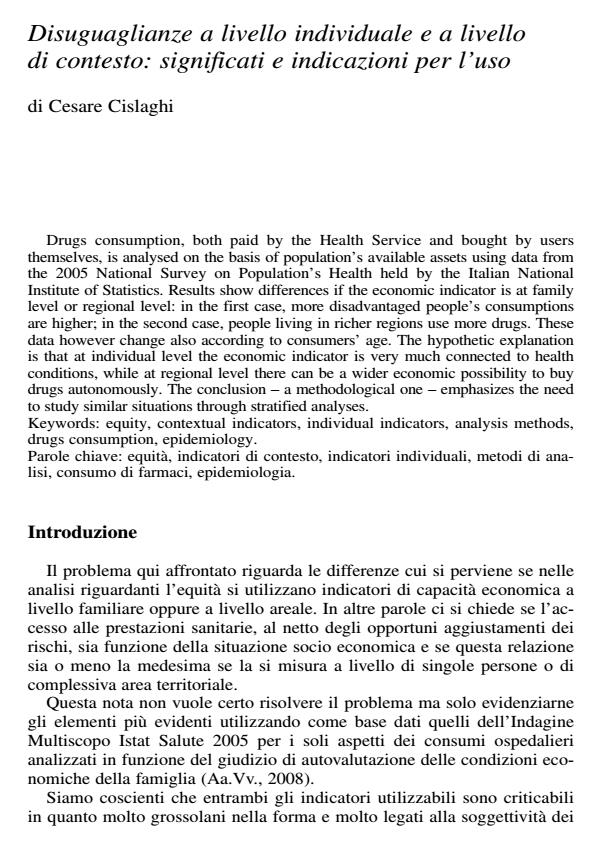Disuguaglianze a livello individuale e a livello di contesto: significati e indicazioni per l’uso
Journal title SALUTE E SOCIETÀ
Author/s Cesare Cislaghi
Publishing Year 2009 Issue 2009/1
Language Italian Pages 15 P. 90-104 File size 829 KB
DOI 10.3280/SES2009-001008
DOI is like a bar code for intellectual property: to have more infomation
click here
Below, you can see the article first page
If you want to buy this article in PDF format, you can do it, following the instructions to buy download credits

FrancoAngeli is member of Publishers International Linking Association, Inc (PILA), a not-for-profit association which run the CrossRef service enabling links to and from online scholarly content.
Disuguaglianze a livello individuale e a livello di contesto: significati e indicazioni per l’uso - Drugs consumption, both paid by the Health Service and bought by users themselves, is analysed on the basis of population’s available assets using data from the 2005 National Survey on Population’s Health held by the Italian National Institute of Statistics. Results show differences if the economic indicator is at family level or regional level: in the first case, more disadvantaged people’s consumptions are higher; in the second case, people living in richer regions use more drugs. These data however change also according to consumers’ age. The hypothetic explanation is that at individual level the economic indicator is very much connected to health conditions, while at regional level there can be a wider economic possibility to buy drugs autonomously. The conclusion a methodological one emphasizes the need to study similar situations through stratified analyses. Keywords: equity, contextual indicators, individual indicators, analysis methods, drugs consumption, epidemiology. Parole chiave: equità, indicatori di contesto, indicatori individuali, metodi di analisi, consumo di farmaci, epidemiologia.
Cesare Cislaghi, Disuguaglianze a livello individuale e a livello di contesto: significati e indicazioni per l’uso in "SALUTE E SOCIETÀ" 1/2009, pp 90-104, DOI: 10.3280/SES2009-001008